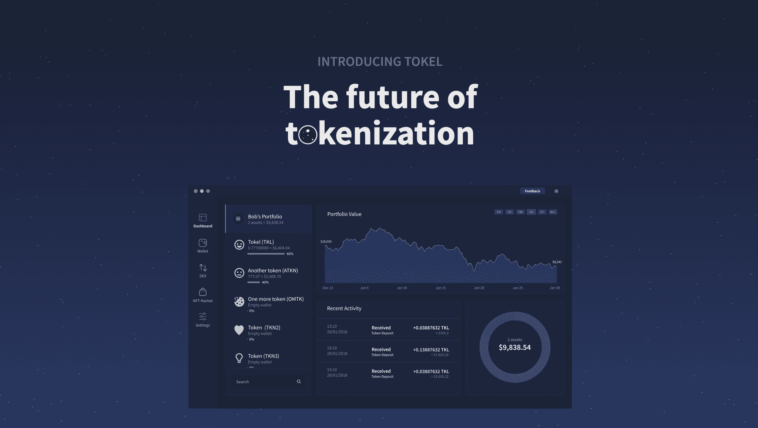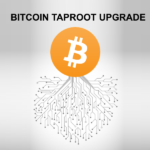NFTs and Tokel
What are NFTs?
NFTs are bought and sold online, using cryptocurrency, and are encrypted with the same software as many cryptocurrencies. An NFT is a token that represents ownership of a digital or physical object or product.
NFTs are inherently one of a kind and have unique identification numbers. NFTs create digital scarcity through verifiable authenticity and the fact there can only ever be one of that individual token. This is in direct contrast to traditional digital creations which are quantity controlled directly by the creator and are typically endlessly available and downloadable online.
NFT popularity has boomed as it became a way to buy and sell artwork. Ownership rights over digital creations such as the Charlie Bit My Finger video or art collections are the most common forms of NFTs at the moment.
Famous digital artist Mike Winklemann, known as ‘Beeple’, pooled together 5,000 daily drawings to create the most famous NFT right now, ‘EVERYDAYS: The First 5000 Days’. Beeple sold this for £50 million. Beeple’s 5000 days can be seen for free on his Instagram page. So why are people spending millions on something that can easily be downloaded or copied by others? Well, NFTs allow the buyer to own the original item and have built in authentication as proof of ownership.
How Do NFTs Work?
NFTs exist on a blockchain, which is a public ledger that records immutable digital transactions. NFTs have historically been held on the Ethereum blockchain, although other blockchains are becoming more popular due to the significant costs associated with creation and transactions (gas fees) on the Ethereum blockchain. Tokel is another one of these blockchains that supports inexpensive creation and transactions of NFTs. Tokel is a dedicated token platform that offers end-to-end token solutions for fixed supply and non-fungible tokens (NFTs).
The unique NFT data that is written onto the public ledger (the blockchain) verifies ownership. The creator can also write other information inside the NFT like signing their artwork by including their signature in the metadata, or other enhancing properties that are interactive or used by other decentralized applications.
An NFT is minted or created as a digital token that represents both tangible and intangible items such as art, GIFs, Collectibles, Virtual skins, Online Video, Designer items and even music.
NFTs are akin to physical collector’s items but are perfect for digital life. Like a normal painting, NFTs can have only one owner at a time. Physical assets/items can also be tokenized (turned into an NFT). This would require the creator stamping/writing the NFT identification number on the item, then uploading an image/gallery of the physical item and referring to that URL within the NFT data. Until such time that regulations identify the true owner of an item via the blockchain written data (NFT), possession is nine-tenths the law. This means that ownership is easier to maintain if one has physical possession of something, even if the blockchain says otherwise.
What’s the difference between NFTs and cryptocurrency?
NFT stands for ‘non-fungible token’. It’s built using similar technology to cryptocurrencies, like Bitcoin or Ethereum but works very differently indeed.
Physical money and cryptocurrency are both considered ‘fungible’, meaning they can be exchanged for one another. Each dollar or coin is equal in value to one another: one pound equals one pound, one bitcoin equals one bitcoin, and one dollar note is exactly equal to another, different, dollar note. NFTs are different. Each has a unique digital signature and identification meaning it cannot be exchanged for or equal to another NFT.
Another difference that NFTs have over cryptocurrencies is that they do not have their own individual public ledger (blockchain); they rely on using a separate blockchain to store their data and conduct transactions with.
The Bitcoin, Ether and Tokel cryptocurrencies are all considered ‘coins’ as they have their own native public ledgers that reward miners with Bitcoin, Ether or Tokel coins for ‘mining’ (processing transactions and storing blockchain data). A ‘token’ has to be created on top of one of these public ledgers, and relies on the miners of that public ledger to facilitate transactions of that token. This can require token holders to pay transaction fees in the native blockchain currency for that service.
What is the point of NFTs?
Blockchain technology and NFTs give artists, businesses, game developers and content creators a unique opportunity to monetise their work, which was not possible before. Memes and internet videos that have garnered so much attention and viewership online, but failed to gain any financial rewards, can now be sold as NFTs and prove beneficial to the original creator.
A royalty amount can be added so that creators can receive a percentage of sales whenever their NFT is sold to a new owner. This is an attractive feature for many as creators generally do not receive future proceeds after the initial sale of their work. This provides an incentive to creators to think of new ways to keep their work valuable over a longer period in order to keep earning from additional sales rather than just have it freely downloadable online forever.
An NFT’s value is based on what someone else is willing to pay for it. Demand for the NFT will be a significant factor to the price over any traditional economic indicators.
As a result, an NFT may resell for less than you paid for it, or you may not be able to resell it at all if the demand has disappeared from when you purchased it in the first place. Like any purchase, the buyer has to do their due diligence before plunging into the NFT landscape as it may not be as simple to ascertain value as crypto or traditional currencies.
The power of an NFT
NFTs allow individuals to cut out expensive middle-men. Artists can cut out third party entities like galleries or auction houses that take profits for selling their art. Game developers can give the power to the player by giving them ownership of specific in game items or visual customisations. Players can be rewarded from collecting and selling their in-game items and loot. Content creators can reach their audience directly through peer-to-peer trading of NFTs that represent the ownership of their content. Businesses can pivot toward decentralized solutions and gain access to the cryptocurrency ecosystem through tokenization. Arenas, Events and Venues can sell digital tickets as NFTs. Car manufacturers can tokenize their vehicles. Online education providers can use tokens as a key to unlock their educational series. The power and possibilities with NFTs is endless and ever-expanding.
How to Buy NFTs
The first step is to get a digital wallet that allows you to store NFTs and cryptocurrencies. You’ll then need to purchase some cryptocurrency, like Tokel or Ether, depending on what currencies your NFT marketplace deals with. You can buy crypto using a credit card on platforms like Coinbase. Once you’ve done that, you’ll be able to move it from the exchange to your wallet of choice. Most exchanges charge a percentage of your transaction when you buy cryptocurrency.
Popular NFT Marketplaces
Once you’ve got your wallet set up and funded, you’ll want to find an NFT marketplace. Currently, the largest NFT marketplaces are:
- Tokel.io: Whilst Tokel’s NFT marketplace GUI has not yet launched, it will provide creators and traders with numerous benefits. In Tokel’s marketplace, non-fungible tokens can be instantly traded on the Tokel blockchain in a decentralized fashion. Tokel hosts a range of features that are all enabled on-chain, meaning you aren’t locked in to one marketplace provider. Tokel is an incredibly affordable and accessible platform as the barrier to entry is reduced because you do not need programming knowledge, and the transaction fees are inexpensive.
- Opensea.io: This peer-to-peer platform describes itself as the home of ‘rare digital items and collectibles’.
- Rarible: Similar to OpenSea, Rarible is a democratic, open marketplace that allows artists and creators to issue and sell NFTs. RARI tokens issued on the platform enable holders to weigh in on features like fees and community rules.
- Foundation: A little different to the two above, artists must first receive ‘upvotes’ or an invitation from fellow creators to post their art. Artists must also buy ‘gas’ from the site to mint their NFTs, which may mean a higher calibre of library for the buyer.
The verification process for creators and NFT listings aren’t consistent across platforms: some are stricter than others. OpenSea and Rarible do not require owner verification for NFT listings. As this is a very young and new industry, buyer protections are sparse at best. Before purchasing any NFTs, one must do their research to verify the validity of the seller, the artwork and the marketplace as well.
––––––––––––––––––
This is a sponsored post. Learn how to reach our audience here.
This article is not a direct offer, recommendation, or endorsement of any products, services, or companies mentioned. Blockgeeks.com does not provide investment, tax, legal, or accounting advice. Crypto is risky, do your own research, invest safe.
The post NFTs and Tokel appeared first on Blockgeeks.





 BTC-USD
BTC-USD  ETH-USD
ETH-USD  LTC-USD
LTC-USD  XRP-USD
XRP-USD